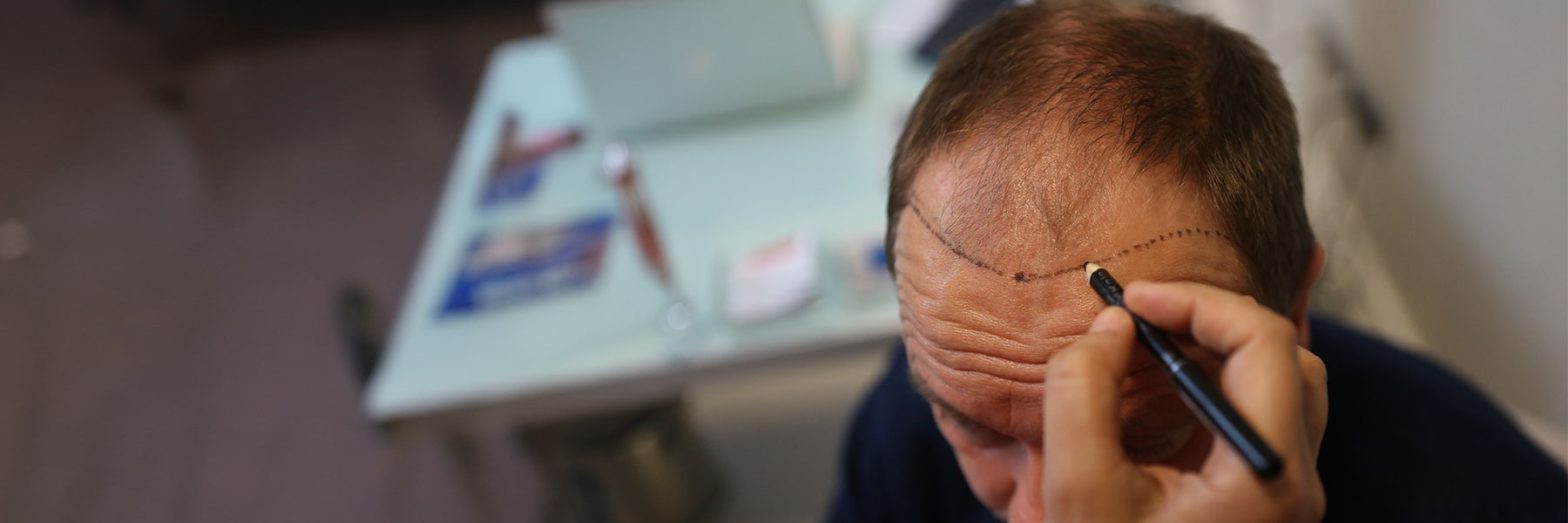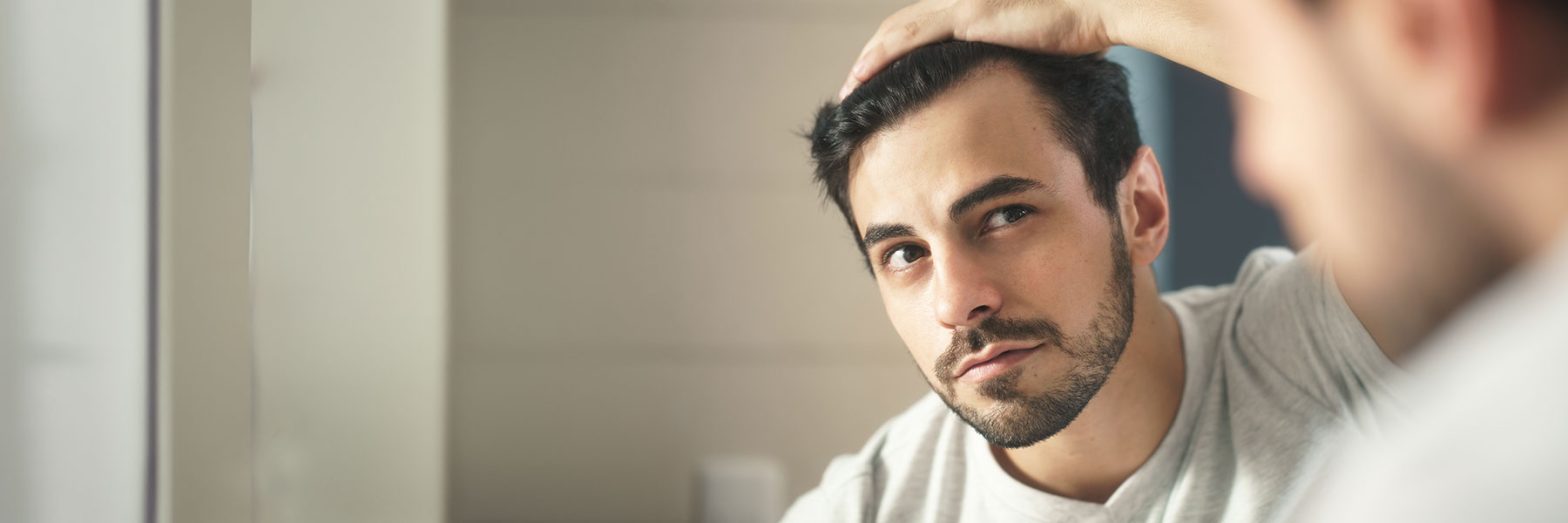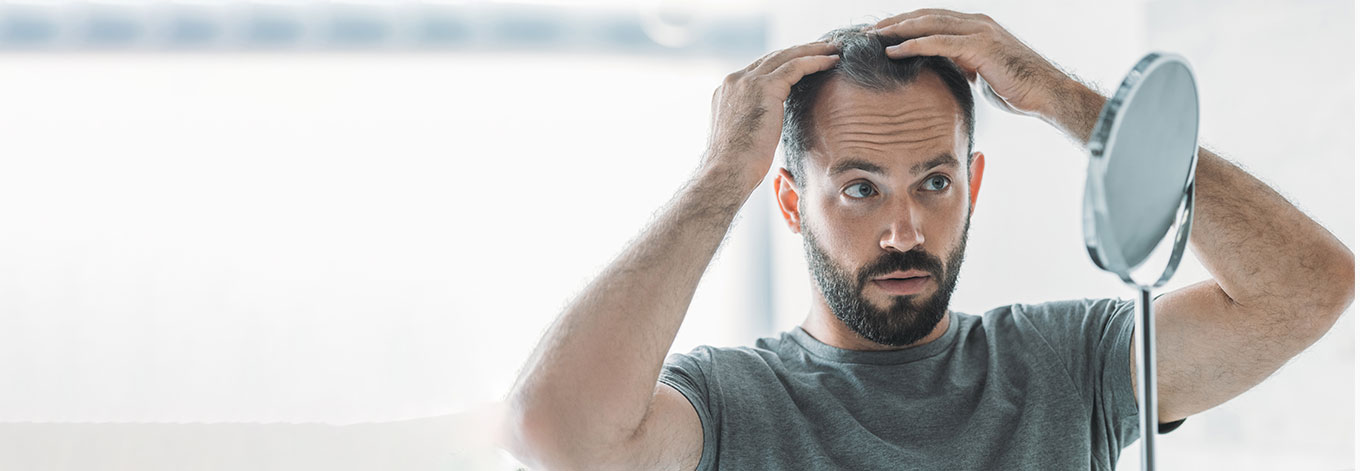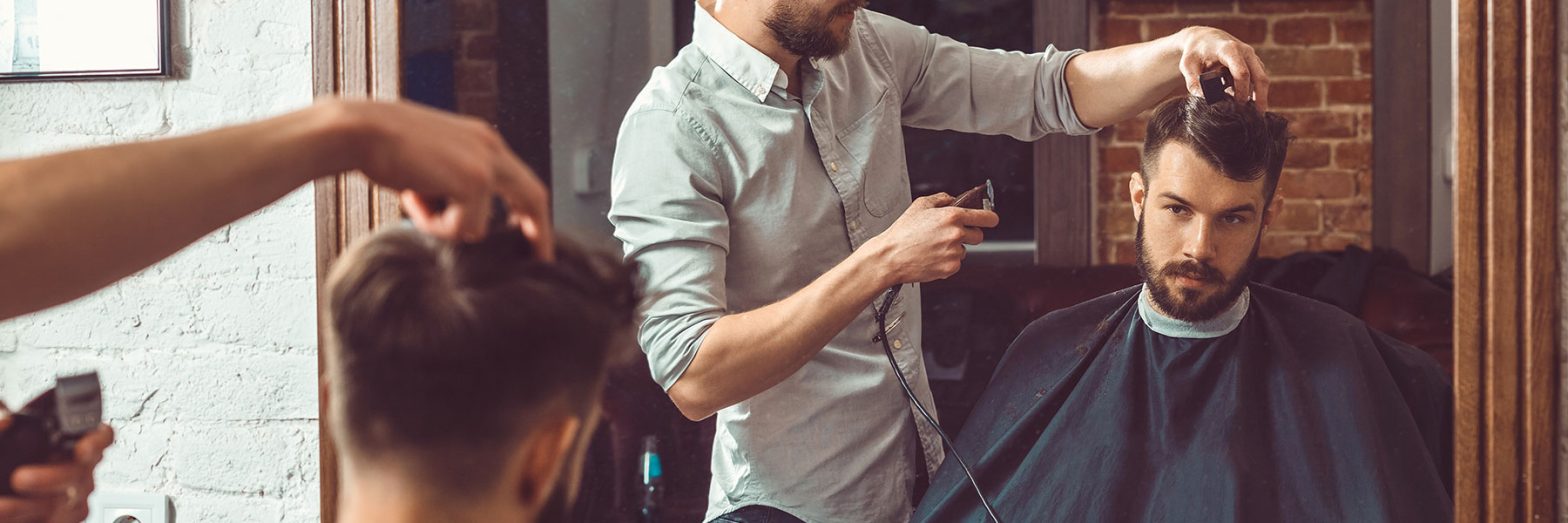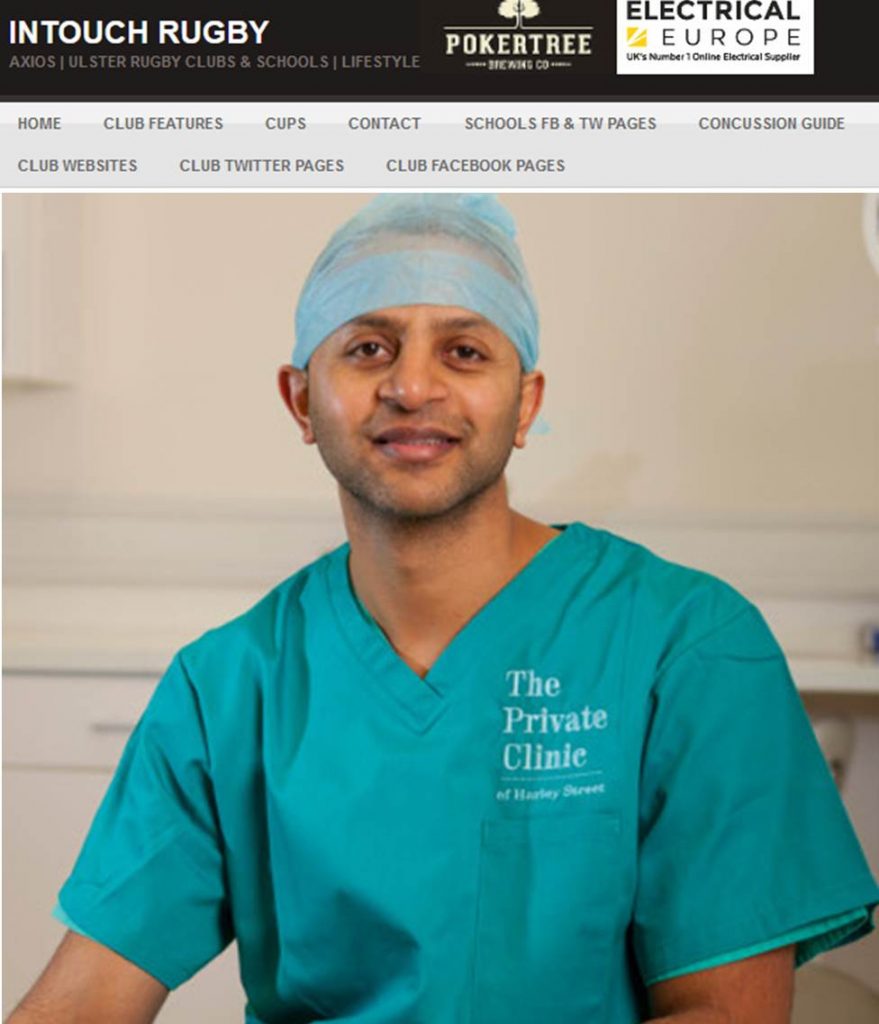
Losing your hair, however old you are, is an unwelcome part of the male ageing process
HAIR LOSS & HAIR TRANSPLANTS
InTouch Rugby
It is said that by the age of 50, over half the male population will have experienced some form of hair loss. Some unfortunate souls can start losing their hair as early as their 20s and, in some cases, even in their late teens.
The likelihood of you losing your hair, and the rate at which you will start to recede, is predominantly down to genes, so if your father or grandfather is thin on top, then the chances are you will be too. But there are some cases where individuals who come from a family of men with a full head of hair, can also start to recede. Here, Hair Transplant Surgeon at The Private Clinic of Harley Street, Dr Raghu Reddy, discusses the different causes of hair loss and shares his top tips for men who are worried about their receding hair lines:
The Balding Process:
First signs of hair loss: below are some details about Male Pattern Baldness which has 4 stages.
· Stage 1 of male pattern balding is a receding hair line at the front of the head. Over time, this hair line recession increases and gradually the hairline will move further back across the scalp (this is stage 2).
· At stage 3 there may also be thinning on the top of the crown and this will gradually increase in size.
· The final stage (stage 4) of Male Pattern Baldness is when the hair is lost completely from the crown and frontal region, leaving the familiar horse shoe shape. The reason for the horse shoes shape is because hair on the back and sides of the head is usually thicker, stronger and more densely packed.
The Causes of Hair Loss:
The likelihood of you losing your hair, and the rate at which you will start to recede is mainly down to genes. There are other lifestyle factors which can play a part, such as stress, hormones and overall health, but if your father or grandfather lost hair prematurely that is the clearest indicator that you may too.
Tests to see whether you will go bald
The Private Clinic can perform a scalp analysis which can map out future hair loss and identify any areas of thinning. This can be extremely useful especially for those who know hair loss is in their family.
Are there different methods of preventing the above?
There are many practical tips that people can follow that may help to slow hair loss.
· Wash hair in warm/cool water
· Don’t straighten or blow dry hair and if you do, it helps to towel dry it first and try not to traumatize wet hair
· Using Regaine daily can help to encourage hair growth and prevent future loss
· Medical conditions like anaemia and thyroid abnormailities can cause hair loss- it pays to see your doctor and get a few tests
· Hair is made up of keratin (a protein) – a high protein diet always helps
· Wash hair at least once a day as it helps to keep the scalp clean and avoid any build up of sweat which would block the pores and cause hair loss.
· Try not to scratch your scalp with finger nails – this in turn traumatizes hair
· Evidence suggests that using an SLS free shampoo like aloe vera has some role in preventing hair loss – SLS is a common chemical found in shampoos (Sodium Lauryl Sulphate)
· Using a conditioner makes your hair softer and also prevents hair loss- spply to shafts not the scalp
· Hair products like gel and wax should be applied to the hair shafts. If applied to the scalp try to wash off the next morning
· It helps to wear a sun screen for your hair or using a hat in mid day sun
Hair restoration treatment
You can’t argue with your genes. If you are predisposed to balding or receding, then no amount of special shampoo, massaging the scalp or adapting your diet, will change that. The only permanent solution is to undergo a hair transplant procedure.
The Private Clinic offers a permanent non invasive solution to hair loss called Third generation FUE. The treatment uses patients’ own hair which can be sourced from the back of the head or body e.g. chest hair. A specialised punch which is less than 1mm in diameter is used to extract individual hair follicles from the scalp and then individually inserted into miniscule holes in the treatment area. This treatment has a 100% success rate and costs vary depending upon the individual but generally, it will cost between £10,000 – £12,000; (£2.50 per hair)
Are there cheap and effective alternatives?
Following the lifestyle advice given above and using Regaine is a cheap way to try and postpone hereditary hair loss. However, once hair loss has occurred, if you want a natural looking return to a fuller head of hair, a hair transplant procedure is the only option.




